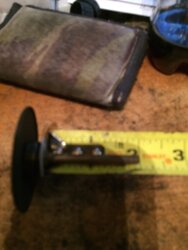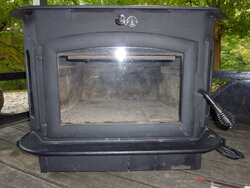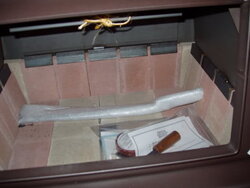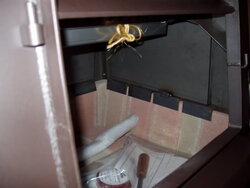First burn was 7.5hrs with the fans. This reflects active cat until inactive cat. I had done this before naturally. However, todays load went in at 11F. It is now 14F. 2.5 hrs into the burn. 435 STT. 190 single wall. House temp has maintained 70F. We shall see.... Remember this is the small stove as well. Not crammed full either. 5 small pine splits and 1, 3" elm round. Pine is 16%, dead elm that barely registers any moisture. First burn with fans also left far less ash? Dunno.
I have exactly 2, 4x8 sheets of drywall with insulation behind them. Entire remainder of house has zero insulation, besides 1/2" or 3/4" exterior foam sheeting under the new siding. Yes, I have bought my fair share of LP in my lifetime . Can't wait to insulate the remainder of the house. Stove should be just right at that point. All fun!
. Can't wait to insulate the remainder of the house. Stove should be just right at that point. All fun!
Second burn on a moderately sized load went 6.5hrs easy. Had to reload due to leaving the house for a few hours.
Third load was full of my good overnight stuff. 11 hrs with good coals left. Cat was just below active. STT was still 250F+. House had dropped to 64F. I can deal with this. Pleased.
I have exactly 2, 4x8 sheets of drywall with insulation behind them. Entire remainder of house has zero insulation, besides 1/2" or 3/4" exterior foam sheeting under the new siding. Yes, I have bought my fair share of LP in my lifetime
 . Can't wait to insulate the remainder of the house. Stove should be just right at that point. All fun!
. Can't wait to insulate the remainder of the house. Stove should be just right at that point. All fun!Second burn on a moderately sized load went 6.5hrs easy. Had to reload due to leaving the house for a few hours.
Third load was full of my good overnight stuff. 11 hrs with good coals left. Cat was just below active. STT was still 250F+. House had dropped to 64F. I can deal with this. Pleased.
Last edited:








 Some of that has to be the tubes of the hybrid system. It would be interesting to know how the EPA actually measures these outputs. I might have to search around for that info. There's a bit of info at the bottom of this page on chimneysweep.
Some of that has to be the tubes of the hybrid system. It would be interesting to know how the EPA actually measures these outputs. I might have to search around for that info. There's a bit of info at the bottom of this page on chimneysweep.